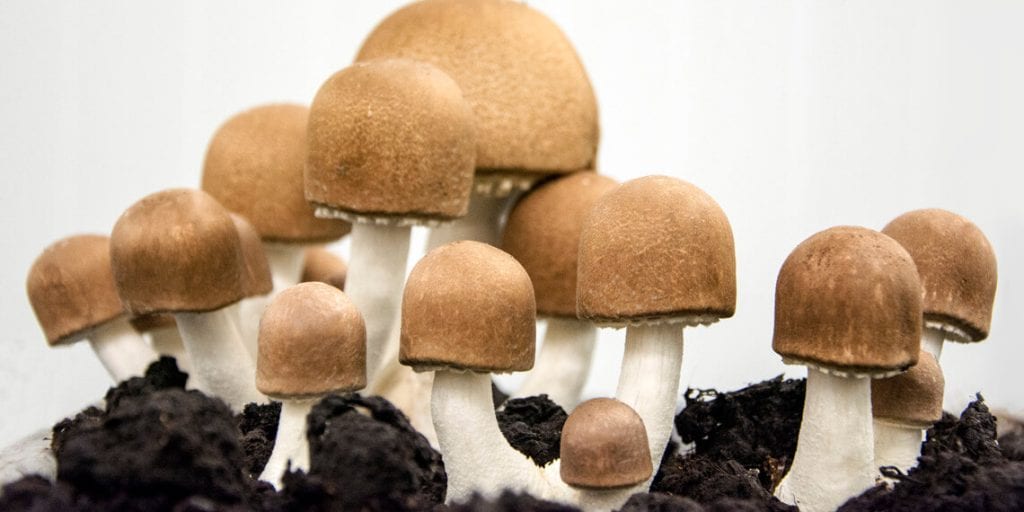Polysaccharides and Glycoproteins
Definition
Polysaccharides are also called glycans and are a subgroup of carbohydrates. Depending on what individual sugars they are composed of, they have different names. The following eight essential individual sugars are the building blocks of polysaccharides: glucose, galactose, mannose, fucose, xylose, N-acetyl glucosamine, N-acetyl galactosamine and N-acetyl neuraminic acid.
A subgroup, the proteoglycans (mucopolysaccharides), is an important component of the extracellular matrix and the cell surface. Proteoglycans have a high water-binding capacity. They are also characterised by a high polysaccharide ratio of 80 to 94 percent and a low protein ratio of six to 20 percent. Protein-bound glycans have a greater effect on the immune system than pure polysaccharides.
Studies focus today on ß-1-3 and ß-1-6 glucans. These are polysaccharides of glucose with a special chemical structure. Depending in which plant or mushroom they are contained, they have a special name: Lentinan from the Shiitake (Lentinula edodes), Pleuran from the Pleurotus ostreatus, Grifolan or D-Fraction from the Maitake (Grifola frondosa).
Occurrence
Examples of polysaccharides are glycogen (stored sugar in humans, animals and standing fungi), starch (stored sugar in plants), cellulose and chitin. They serve as important reserve substances and as a nutrient basis.
The beta-glucans are found in algae, oats, wheat or yeasts. However, the widest variety of particularly valuable beta-glucans is contained in especially in mushrooms. Apart from the beta-glucans, which have already been comprehensively examined in studies, there are so many other biologically active polysaccharides in mushrooms. Plants contain especially ß-1-4 with a molecular weight of 45,000-50,000 dalton. Beta-glucans in mushrooms have a weight of 1.5-2 million Dalton. This is a plus point, because it is assumed that a high molecular weight has a better and more complex effect on our body. It has also been established that the mushroom fruiting body contains a higher overall amount and a wider variety of polysaccharides than the mycelium, whereby the concentration of the polysaccharides depends on the developmental stage of the fruiting body. The activity of the polysaccharides also increases with the development and growth of the mushroom fruiting body.
Properties
Polysaccharides harbour great potential in relation to the change of their chemical structure and therefore a very large capacity to transmit biological information. This allows an enormous flexibility, which is important for influencing precise regulation mechanisms in higher organisms. While, for example, only 24 oligopeptide configurations with four peptides (proteins) are possible, more than 1000 different oligosaccharide configurations with four carbohydrate molecules are possible.
There are many beta-glucans from mushrooms whose detailed structure has not been conclusively researched. To work effectively, the beta-glucans seem to need a ß-(1-3) or ß-(1-6) connection. The more complex their structure and ramification, the more complex their effect on the human body seems to be.
Through vitamin C, a high molecular weight becomes low. This leads to better absorption in the intestines and blood. A research study by Rice has shown that the intestinal absorption of the beta-glucans is an active process that depends on gastrointestinal macrophages.
Experiments with indicated beta-glucans have shown that they can be identified three days after intake in the lymph nodes and in the spleen and four days after intake in the bone marrow. In all cases, they can be identified within the macrophages. In the first three days after oral intake, the beta-glucans show no change. Within 14 to 21 days they are then broken down. The resulting fragments are biologically active, are transported outwards and already on the fourth day are taken up by the CR3 on the membrane of the granulocytes, where they exert their function of stimulation of the immune system.
Depending on the degree of polymerization, there are soluble beta-glucans – these have a stronger immune-stimulating effect – and insoluble ones. The more they are ramified, the more likely it is that they are water-soluble. The polysaccharides with a low molecular weight are also soluble in alcohol.
The connection between chemical structure and effect
In Japan and China, some of the polysaccharides from mushrooms have undergone phases I, II and III of clinical studies. However, the size and complexity of their structure make it difficult to study the precise effect mechanisms. There is disagreement about whether and to what extent the chemical structure (ramification, molecular weight) has effects on the action mechanisms in the body. The data about the relationship between chemical structure and effect are very varied and contradictory.
On the one hand, it is reported that polysaccharides with a high molecular weight (800,000 dalton) exert an influence on a wide range of immune functions, but after the size is reduced by heating, the scope and strength of the effect is reduced proportionately. In vitro studies have shown that beta-glucans with a high molecular weight can activate the leukocytes directly. According to Fadok et al., beta-glucans with a high molecular weight also increase the ability of the macrophages to identify and destroy apoptotic cells. For beta-glucans with a medium or a low molecular weight, in vivo biological activities were also proven. However, their cellular effects are less clear. Beta-glucans with a very low molecular weight (5000 – 10,000 dalton), on the other hand, are inactive.
Elsewhere one also finds an indication that denaturation reduces the activity of the monocytes induced by cytokines and that effects are lost due to the cleansing of individual substances. Other statements postulate that it is not assured that a high molecular weight generally has a better effect, that this varies depending on the starting substance.
As long as it has not been clarified which isolated polysaccharide is the most effective, one should use the polysaccharides in the form in which nature provides them to us: uncleansed, not denatured and as a combination of the various chemical structures. This is also confirmed by several studies – Ghoneum et al., 1995; Wedam and Haynes, 1997; Sawai et al., 2002. All these studies show that a mix of different polysaccharides has a stronger influence on the immune system.
The effect on the immune system
The beta-glucans are similar to the polysaccharide chains on the outer cell wall of bacteria. This simulates the penetration of pathogens and the immune system is trained. Beta-glucans are not synthesised by the human organism. The body therefore identifies them as foreign to the body, so that they stimulate both the innate and the acquired immune response.
To be more precise: beta-glucans have similar molecular properties to pathogens. They are therefore recognised by certain receptors in the cell surfaces, triggering an immune response. These receptors are Dectin-1, the complement receptor, the scavenger receptor, LacCer (lactosylceramide) and TLR (toll-like receptor). It is the receptors through which the beta-glucans transmit their effect.
Dectin-1 is a lectin and is found on macrophages, neutrophile granulocytes, dendritic cells and T-cells. ß-1-3- and ß-1-6 glucans bind to it. This binding leads to the activation of the phagocytosis, which stimulates the production of ROS, TNF-alpha, IL-2, IL-10 and IL-12.
The complement receptor is found on neutrophil granulocytes, monocytes and NK cells. Beta-glucans and many pathogens bind to it. This triggers a cytotoxic effect on tumour cells.
The scavenger receptor is found in endothelial cells and myelogenous cells (monocytes, granulocytes). LDL, HDL, various extraneous cells and Lentinan bind to it. This activates various kinases and eNOS LacCer on neutrophile granulocytes leads to ROS formation; LacCer on epithelial cells to the synthesis of TNF-alpha and NF-kappa B. Beta-glucans and microbial cells bind to it.
The toll-like receptor TLR is found on macrophages, lymphocytes, dendritic cells and epithelial cells. It reacts to mushrooms, bacteria, viruses and protozoa, leading to the formation of NF kappa B and cytokines (TNF-alpha, IL-12).
The effect on the innate unspecific immune response is to increase the cytotoxicity and cytokine production of macrophages, natural killer cells and neutrophil granulocytes. Through the production of free oxygen and nitrogen radicals (NO gas), they also act against degenerated cells, viruses and bacteria.
The effect on the acquired immune response consists in the activation of the dendritic cells. These are derived from monocytes and present the T-cells with antigens. Beta-glucans also stimulate the production of the cytokines and chemokines IL-8, IL-1b, IL-6 and the tumour necrosis factor TNF-α. In addition, the ability of the macrophages to identify and eliminated the cells in apoptosis.
Beta-glucans show significant effects in animal testing and clinical studies. These include an antiviral effect for HIV (increase in CD4 cells), hepatitis B (stimulation of phagocytosis) and the swine flu virus (reduction in viral nucleic acids in infected animal cells, increase in interferongamma and NO gas), as well as generally an antibacterial and antifungal effect. Wound healing is also supported through increased activity of the macrophages.
In addition, a direct cytotoxic effect on cancer cells through polysaccharides has been discovered. The development of cancer and the progression of tumours can therefore possibly be halted by beta-glucans. Active polysaccharides are also fibre that can absorb possible carcinogens and support their elimination through the intestines.
Further effects of polysaccharides
Beta-glucans reduce the cholesterol level, whereby the effect mechanism has not been precisely explained. One theory suggests that they bring about an increased release of bile acids so that more cholesterol is also eliminated. Another theory postulates that the production of cholesterol in the liver is reduced under their influence.
Beta-glucans can also reduce a rise in blood sugar after eating. The reason for this is that they probably affect a delay in gastric emptying. Animal tests also show a hypoglycaemic effect after an injection of polysaccharides. This is not explained by delayed gastric emptying but through other hitherto not clearly explained mechanisms. Most probable are changes to the insulin receptors, which become more sensitive to the absorption of sugar into the cells under their influence. In addition, a direct increase in the insulin level is discussed.
Furthermore, beta-glucans reduce the triglycerides and are helpful against arteriosclerosis. This also explains their controlling effect on blood pressure.
Sources
- Smith, Rowan and Sullivan: “Medicinal Mushrooms: Their therapeutic properties and current medical usage with special emphasis on cancer treatments.”; May 2002, University of Strathclyde
- Willard, Terry: “Reishi – Der Wunderpilz der alten Chinesen”; Wilhelm Heyne Verlag, 1999
- Prof Dr med Ivo Bianchi: “Moderne Mykotherapie”; Hinckel Druck, 2008
- Chen, Jiezhong, Seviour Robert: “Medicinal importance of fungal ß-(1-3), (1-6)-glucans”; Mycological Research III (2007) 635-652, Elsevier
- Hobbs, C : “Medicinal Mushrooms”; Botanica Press, 1995
- Halpern, G M : “Healing Mushrooms. Effective Treatments for today’s illnesses”; Square One Publishers, 2007
- McAnalley B H, Vennum E.: “Einführung in die Glykonährstoffe”; Glycoscience & Nutrition“; Vol. 1 No. 1, January 2000
CHOOSE THE RIGHT PROVIDER
There are many suppliers of mushroom powders. You will find trustworthy manufacturers in Germany with controlled organic cultivation. Click here to find out what is important when buying.





